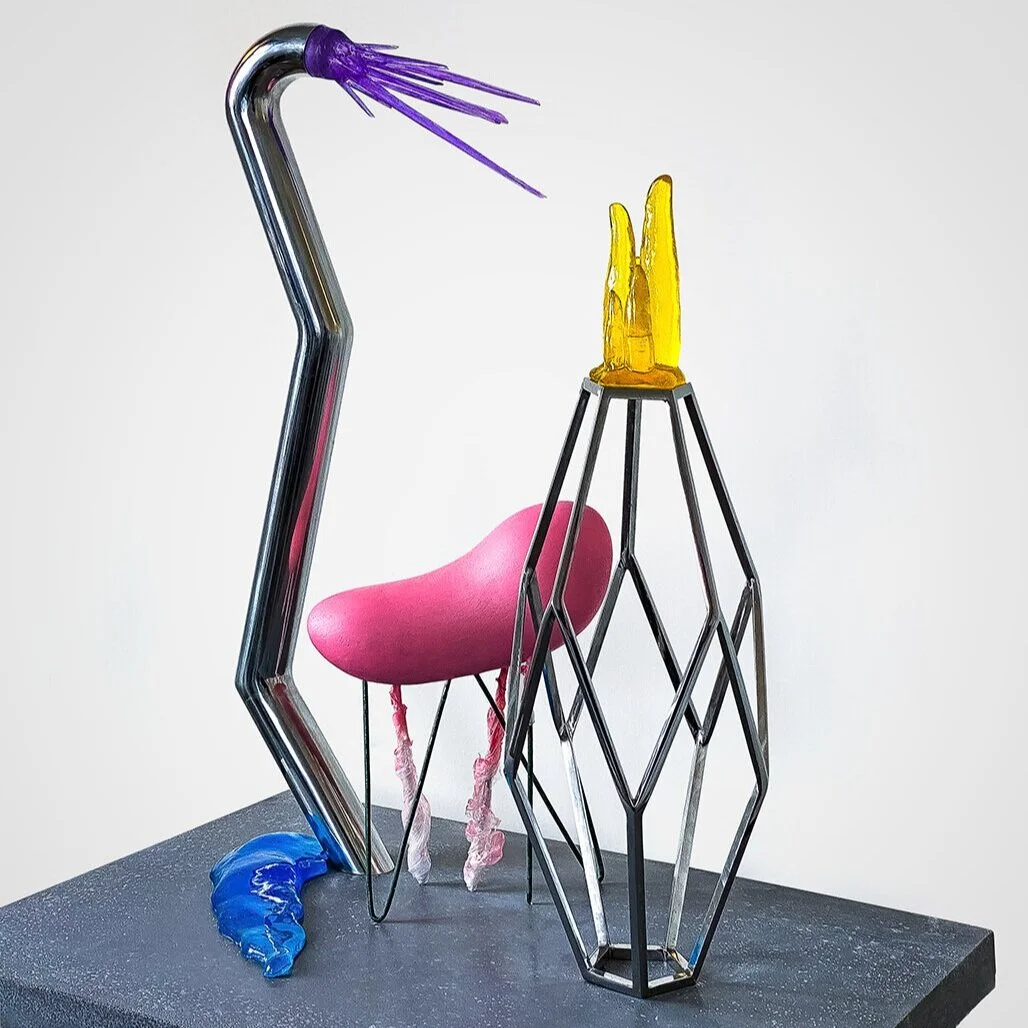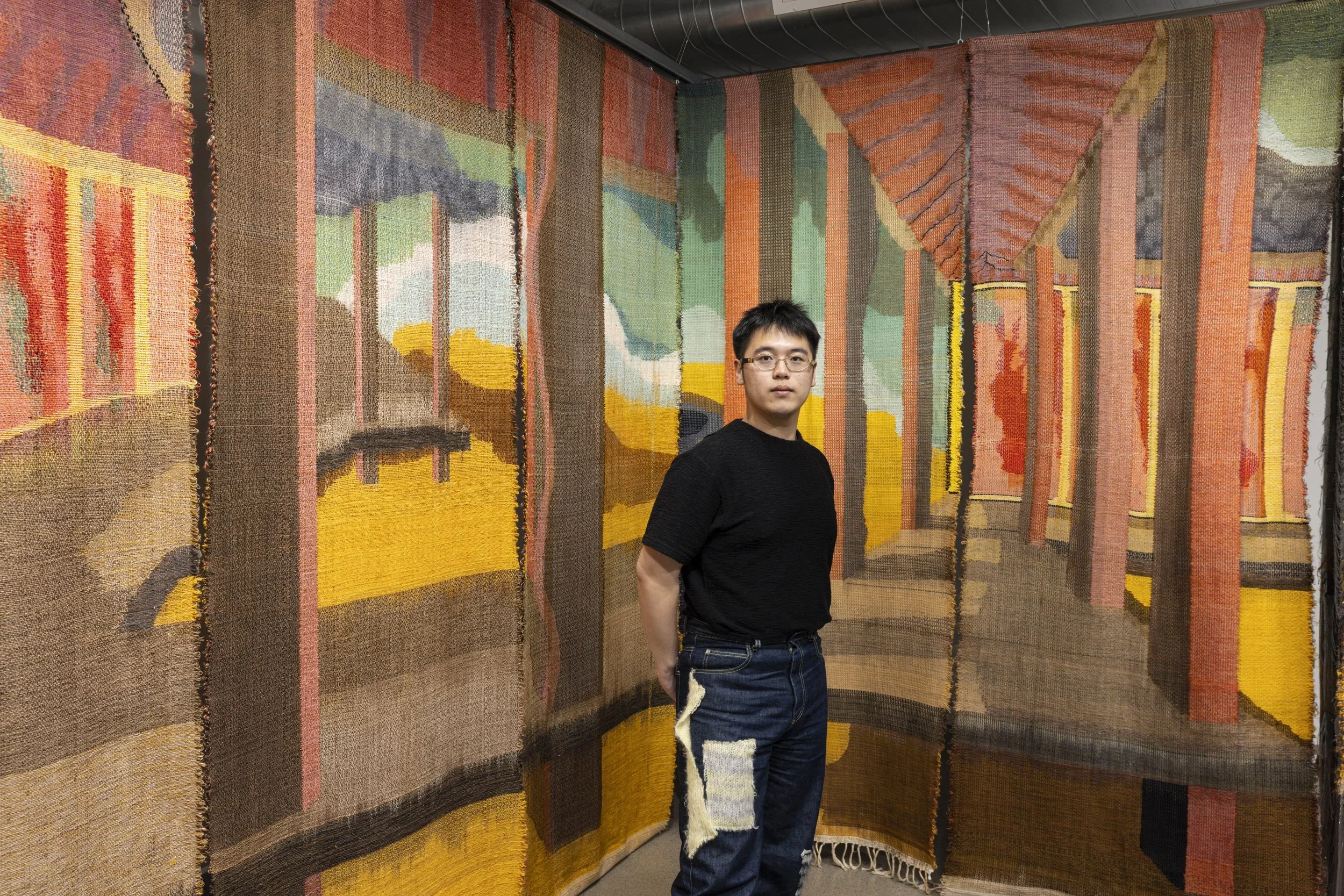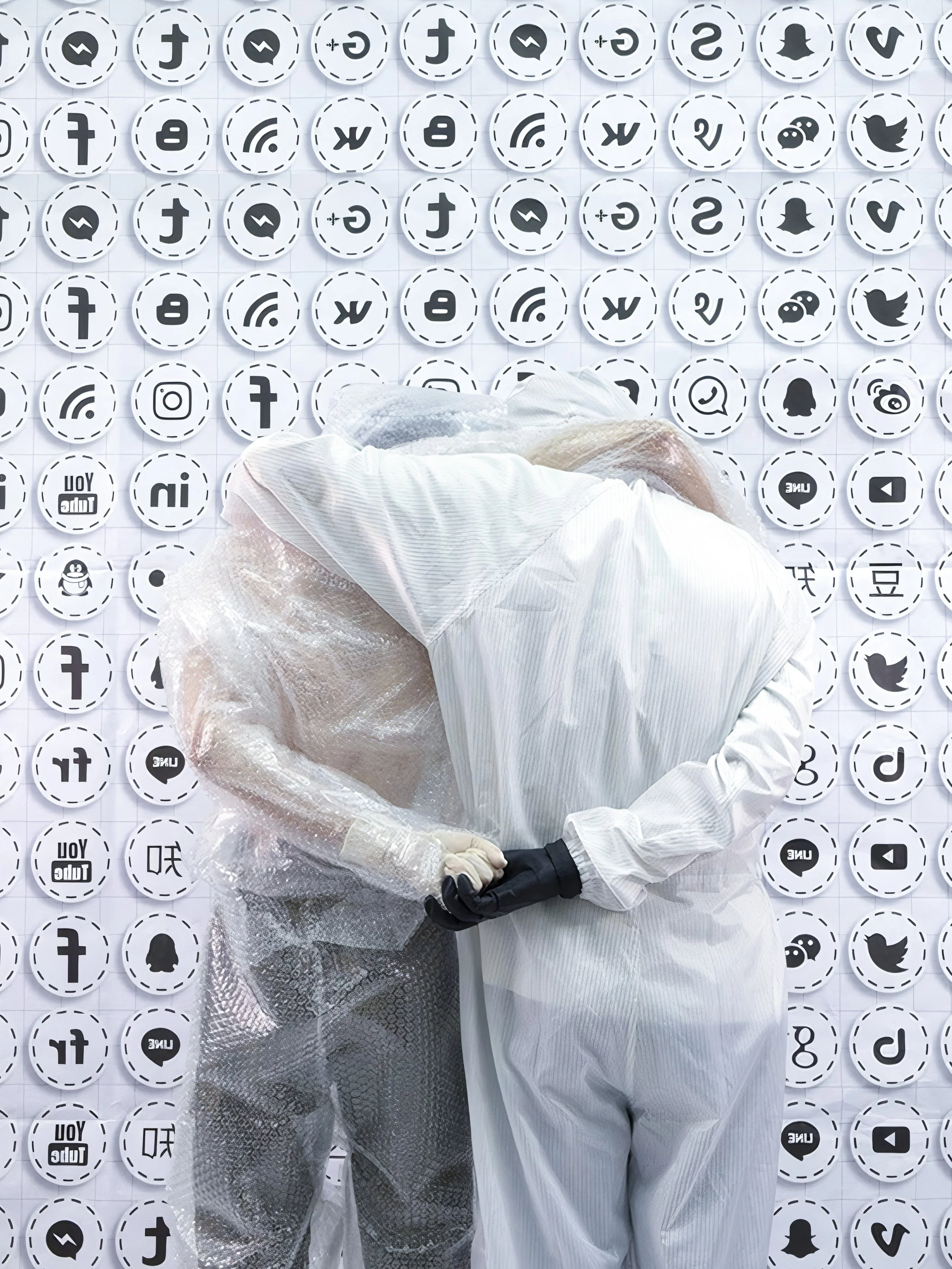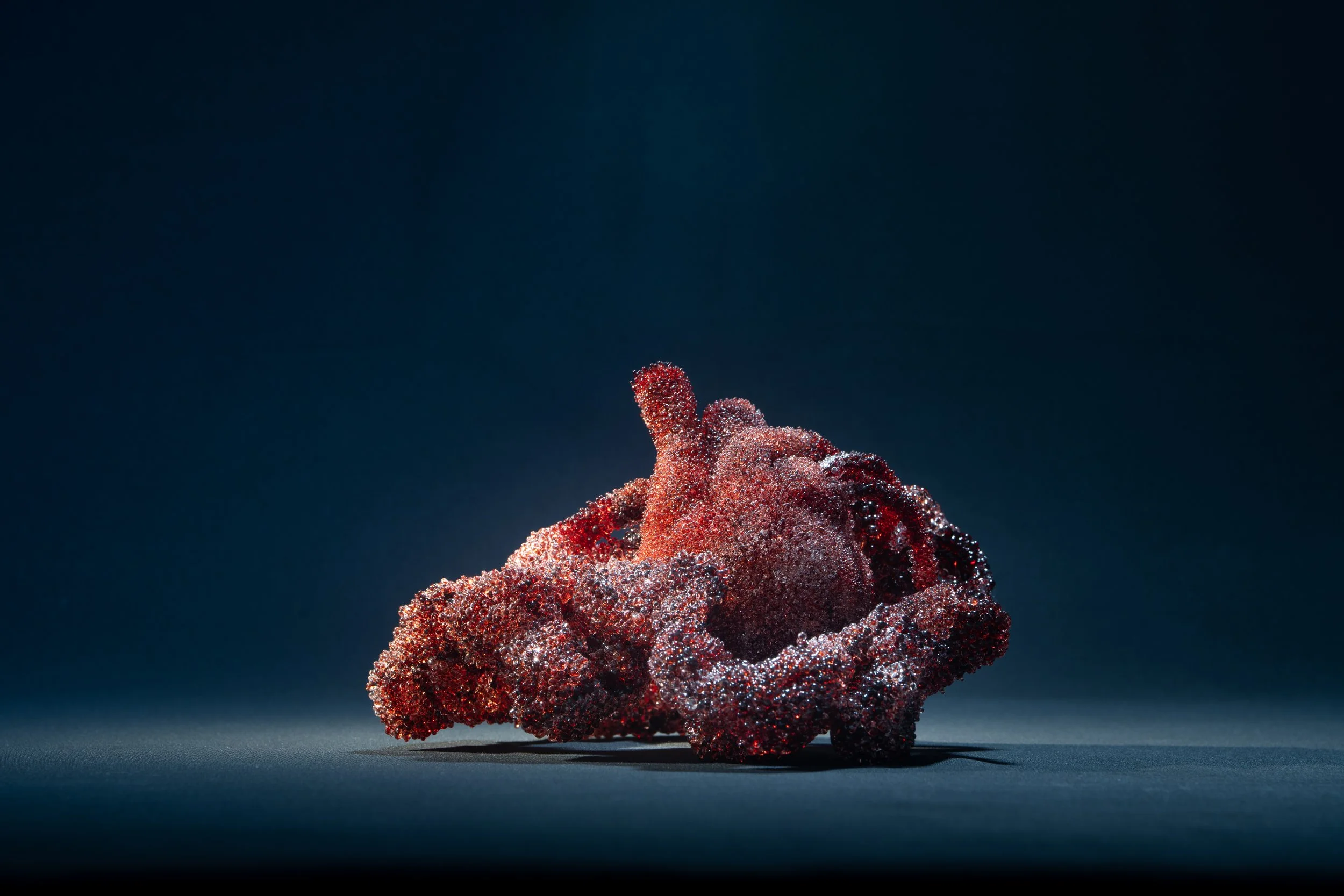9 Questions with Valentin Korzhov
«– My objects reflect the process of transfiguration of the existence into the time, infinity into immediateness. I try to palpate the channel of communication between eternity and time, the channel that works in either direction.»
Valentin Korzhov is an artist of space. Fascinated by Heidegger’s idea of nothingness Valentin places his unusual sculpture into a neutral natural environment to observe their materiality in the surrounding of almost complete nothingness. This’s, according to the great German philosopher, the only condition where the form can reveal itself. The weird indescribable objects resting on the endless snowfields look strange and alien, and here comes another, literal connotation – the Space. Valentin derives the shape of his sculptural forms from the geometry of cosmic formations fixed by the Hubble Space Telescope by drawing the line between the star clusters. The follower of Henry Moore and Francisco Infante, Valentin chases the purity of form – his molded casts experience no human interference but only acquire a cosmic sophisticated polish color or just remain white.
Valentin Korzhov, Photo Dm. Kilpio©
Valentin was born in Moscow and started his artistic career as a sculptor by entering an art institution. After graduation, he became an assistant at his teacher’s workshop – a famous sculptor and metal artist Victor Sidorenko. That was the place where he could master his skills in work with a material and soon he started his own experiments with plastic forms as a reflection of his philosophical ideas. He experimented with porcelain and the result of his attempts became an exhibition Archaeology of Memory – a grand ziggurat of porcelain human skulls in colors of former Soviet republics. Then he addresses the metal as a material for his search of shape and meaning. The series Desolation is a starting point for his long journey in finding the perfect form or vice versa – formlessness that acquires its meaning while interacting with time and space. He goes deep into ideas of Greek philosophy and Martin Heidegger. At the same time, he’s fascinated by the oppositions of Plato and Darwin's theories on the origins of life and the human condition which reflects in dramatic projects Darwin vs. Darwin and Trinity. Here, the highly realistic animalistic and human silicone objects are placed in an abandoned rural or urban setting somewhere in Spanish Tarragona or the Russian countryside. This’s the period Valentin engages more and more with a photo camera to create complicated scenes in the aesthetic of the Renaissance or Felini’s films with the help of performance artists and professional actors. He goes into long expeditions with his team to deepen into long experimentation with setting up objects in different places, catching the light, mists, fogs, and solar reflexes. Gradually, the video becomes an innate media of these practices while sculpture plays the main and essential role. At the same time, Valentin’s plastic search crystallizes into a pure shape of cosmic formations and as a result into a focal project – Being & Time – a culmination of his philosophical reflections, artistic experimentations, and technological perfection for the last decade.
Valentin Korzhov, Photo Dm. Kilpio©
It’s hard now to define one discipline in Valentin’s oeuvre – each of his works is a combination of sculpture and painterly composition staged with theatrical precision and fixed by a camera. Valentin approaches his every project as a large-scale collaborative engagement with participation of high-rank international photographers, film directors, actors and technical professionals. The ending result grants the viewer with immersive multidisciplinary installations combining sculpture, video and photos. Valentin is the only artist living in Russia who works on the edge of all major artistic media, philosophy and science.
Valentin is the member of Moscow Artists Union, sculpture section. His personal exhibitions took place in such important public spaces like Ekaterina Cultural Foundation, State Darwin Museum, Center for Contemporary Art Winzavod, Arts Academy and many others. His exhibition Archeology of Memory was showcased as a collateral event of the 5th International Moscow Biennale of Contemporary Art. The project "BEING & TIME" was included in the main projects of the VIII Tashkent International Biennale of Contemporary Art in 2018. In 2020 Valentin became a finalist of the XIV International Arte Laguna Prize, in March 2021 he is presenting his installation "THE BRAIN THAT PASSED AWAY" in Venice.
Valentin was included in top-100 Renowned Russian Artists (InArt 2018).
#ANIZOTROPIA online exhibition of one of the Arte Laguna Prize finalists - Valentin Korzhov http://korzhov.com/!
Thursday (17 September) 6 pm Italian time - it will be held in a format of a live stream to the page - https://www.facebook.com/events/964801757333243
Valentin Korzhov©
Valentine, welcome to Al-Tiba9. I am Mohamed Benhaj, founder and curator. I am hooked on your statement; you say: "My objects reflect the process of the transfiguration of existence in time, infinity into immediacy." Please explain what you wanted to say.
This essentially works on the form, the moment of transience, the moment the form's legitimacy. For me, As for the author, it is a search for an ontological foundation. For example, in the project "being and time," I updated the constellations. I looked at the pictures of the hub and updated the lines. In others, the moment I was able to select the shape, I traced the starry sky, star clusters in color flashes. At some point, I understood it as a shape, and at some point, these shapes began to multiply. At some point, I refused to do this, made 10-15 forms, and got a car with striking shapes from the starry sky. The starry sky is not profane as we look in a detailed pipe. Still, as harmony, a necklace, like beauty, like molding, and the forms began to pour into my head, and if we say that the transcendence of the divergence of the sky at the moment of collision, we see a reflection of ideal beginnings that have no time. Infinity cannot have time. Further, outside of the temporary, the forms begin to pour onto my head, which becomes understandable. I am mortal, and my forms crumble under ultraviolet temperature loads, and at this moment somewhere, we can fix the way out of timelessness.
Your work is a call to leave the "split" Space, from material to emptiness, to establish a relationship with Space and time. What is the critical element for full artistic revelation? Tell me about your visualization as part of the creative process.
As I mentioned earlier, it is always an experiment and research. I work with entirely different forms of rendering - from sculpture to video and from photo to sound.
Valentin Korzhov©
Valentin Korzhov©
Your sculptures are the meeting place for all major artistic media, philosophy, and science. Could you elaborate on how philosophy helps in your work and how science and astronomy are incorporated into the process?
Philosophy does not help anyway. It either exists or not. In this context, I perceive the possibility of thinking. I either make this possible, or absence, spontaneous reflection, ability, or not to think.
In philosophy, this is the possibility of thinking, or its absence, thinking I comb to the senses available to us or not, we are open to this, we perceive it. We are talking about the universe's presence, and the question is only in the availability or inaccessibility. The project of "being and time" when I was circling the star clusters, at some point, I began to see the figures, obvious figures, they began to fall on my head, taking on time, and it seemed to be a very transgender project. Talking about anisotropy, on the one hand, we see the exhaust manifold of the BMW M3, and adrenaline alpha machismo from the word macho; this is business, someone makes a margin on the sale of these cars, this is marketing.
You only look into these spaces, in which you can see the essence of the energy release because we are talking about the combustion of the engine. You can see all the Eudoxian metaphysical geometry, ellipses on top of each other, and everything radial to the Pythagorean. Of course, the divine proportions of bows of Pochellia and Leonard Davinci as a transcendental moment, the transition of the world of ideas into the Heraclitean fire, into our material, eternal, cooling material world. This release of energy from the collector is a combustion product. It seems to be a very fundamental work, so these transcendental trajectories can be felt.
Valentin Korzhov, Photo Dm. Kilpio©
You are about to open your new exhibition called "Anisotropy." What can we expect?
The concept has a modern interpretation, which is colonized by positivist science, to a greater extent by such a direction as crystallography. Crystallographers perceive anisotropy (from the Greek. Anisos - unequal and tropos - direction) as the heterogeneity of the environment's physical properties that determine the movement and development of an object. If, for example, you pass a beam through water, it will be refracted the same way, no matter which side you send it. If through crystals, then in different directions and different ways. Instead, I borrowed the archaic interpretation of the word "anisotropy." This is the world as a fullness of hidden trajectories along which the being moves.
Look here. The exhaust manifold is an ordinary profane object, a spare part for a car. This is a plexus of pipes attached to the engine, and exhaust gases are emitted through it. It can be a product that is sold in a store, or a status item, a collector of a sports car that produces a hallucination of the image, or rather, a simulacrum. On the other hand, it is a transcendental object. If we imagine the moment of burning and energy release, we will see the peacefully extinguishing Heraclite worlds.
Valentin Korzhov©
I talked to engineers who explained the essence of the items. If we talk about the collector, this is a colossal release of energy during combustion. In order not to lose it, the pipes must be of the same length, and this is placed in a very confined space, forming an octopus from the pipes. If we look closely, we will see that these are snakes. Mythologically. The very ones who attacked Laocoon tried to warn fellow citizens not to let the Trojan horse into the city. Those that make up the hairstyle of Medusa the Gorgon, who turned people into stones. It is also Typhon, the snake-legged giant who fought Zeus.
We are also in a fight; we are chaining energy into pipes. And along with this, the whole world appears to us, headed by Plato, Eudoxus, and Pythagorean geometry. We see the miracle of the relationship between radius and circles.
Valentin Korzhov©
Are there any new works that you are exhibiting in Anizotropia that you can talk about?
This part, the manifold, was made to order in a car tuning studio. The customer refused it, and just then, I was talking to the manufacturer in search of a form. This is how it came to me and is now one of the central pieces of the exhibition. As a result of creative play, the color, meaning, and essence of this object changed. Now he is not needed for status, but the whole world appears before us in his contemplation.
How long did it take to develop this show?
The project, which was in a productive slumber for several years, 2-3 years, I was concerned about it after understanding the being and time. After all the stellar stories, this is new material, and I physically created it during the pandemic, all this time it was dozing in sketches... For several years he lived in my imagination. In sketches, he was drawn to the details. Still, somewhere his hands did not reach, he did not feel his inner readiness, laziness, somewhere I was not saturated with being and time, but he was ready. And pandemic was a beautiful pause; we are in the face of death, essentially dasein, which was the gravitational basis for finalizing all objects. For six months, ten objects were released.
Valentin Korzhov©
You know, almost all art fairs and exhibitions are digital, which is not very convenient when sculptures are exhibited. How do you solve this issue? What is your path in the virtual world?
On the one hand, it is not resolved in any way, not in the case of painting nor sculpture. An attempt to drag painting online is understandable - just a digital scan or photograph. The sculpture is essentially the same - you have to scan and rotate them - in fact, the same 2D, and you can turn it. Every corner changes light, shadows. Unlike painting, it is more expensive and longer. You rotate the object along the 180 ° axis. You can ask questions at the conference and discuss what you saw with other people. In the museum's context, the group is important: someone laughed, someone said that this is complete nonsense. When we just clicked on a photo, this is not an event.
The absence of presence still hides a lot from us, hides. This is my first time working on an online exhibition. I am sure that I will be able to say a lot after the exhibition.
We tried to embody the moment of communication - conferences, online zooms, Skype, live communication. As a moving volume, the absence of a living author, with his reactions in your presence, not as he recorded a video or on Skype, he looks at you, in the eyes, or does not look, the author is like a medium. He is a conductor of his work, and the absence of this contact to hides something.
But I'm sure there is no future at all. There will be millions of online offers, but it will still be a simulation. Naked and ruthless, no matter what the marketing noise, yes, there will be sales, but a lot, but it will never notice the real event in which the viewer finds himself with the author and his work.
Did photography replace painting? After all, the conversation is about this.
Valentin Korzhov, Photo Dm. Kilpio©
What is the hardest part of your creativity? How do you overcome obstacles in new projects?
Laziness, I guess. But laziness is not the kind that assumes that I lie on the stove and do nothing, but intellectual for me is to think, material mobilization because unbridled matter needs to be set in motion from nothing, atoms, metal, cardboard, resin to generate something, something else, this also needs to be seriously forced to deal with, management and hundreds of incoming and outgoing processes. The maximum is an attempt to understand and raise the transition of the being and time—years of drawing these sketches. I don't force myself. It's really interesting to me with a glimpse of the anthology I want.
They say that if you could be anything but an artist, don't be an artist. What career are you neglecting now as an artist?
We understood this question as - who would you be if you were not an artist
This is not thought out in me, but such a concept always attracts me as a doctor. When I see doctors, I somehow deeply and for good envy and regret that I am not a doctor. Are we doing serious things because they attract us? It is necessary, Vasya, it is necessary, the trumpet is calling, fate. It's intuition and inner voices. A vocation is a matter of life. It's like a betrothed, you don't choose your husband/wife, or do you think you choose?


























